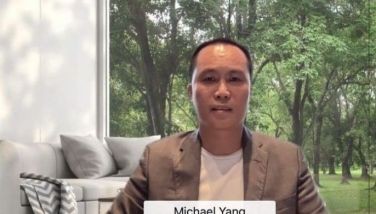AEC 2015 and beyond/ Benchmarking on the EU Integration
Let me start by saying 'the world was a very different place in 1950 when the European integration process started.' It was a different place both in economic and geopolitical terms. Both the economic and the geopolitical differences are crucial why European integration took the supra-national form that it did.
In 1950, the world was just emerging from four appalling decades which has seen two world wars and the Great Depression. All three catastrophes led to widespread restrictions on trade. As a result, the post-war world economy was highly fragmented and characterized by unconvertible currencies, high tariffs, and widespread quotas. Regional trade agreements were therefore a desirable option for export-oriented economies.
In contrast, the world economy today is highly globalized. Since Asian export sectors already have access to global markets, they do not have the same interest in regional trade agreements. As in post-war Europe, Asian growth strategies have been based on exports, but Asian tigers have always been able to export to Western markets which have been relatively open.
Geopolitics is also important. The US strongly encouraged postwar European integration; even though regional trade arrangements in Europe imposed direct economic cost on the US, it was willing to pay that price in order to advance European political integration. European free trade areas that did not involve supra-national political elements offered economic costs with no corresponding political benefits; the US was therefore hostile to organizations such as the European Free Trade Association (EFTA) while remaining strongly supportive of the EEC. In this context, it is useful to compare that the initial steps to create ASEAN were based on the fear of the expansionary moves of the Republic of China. Decades later, China is trying it again in the South China Sea, which politically puts pressure on ASEAN to take a joint stand against China.
Comparing what the EU looks like today with AEC to be, here are the differences:
In other words, enormous differences in the two systems and consequently we will have to have different expectations. At the same time, however, the EU has changed enormously from the beginnings in the 1950s to where it is today.
But we have to be realistic also that an ASEAN Secretariat with limited powers, limited funds, limited people cannot do the integration process alone. In my view, business has to be the driver to get things going; business is going to benefit most; business has to see to it that the governments are opening the doors and are enablers, looking at inclusive growth, job generation and the elimination of poverty.
In the end, it is about building a more integrated ASEAN region, free from poverty and conflict, prosperous and confident and well-equipped to shape its destiny.
***
Henry J. Schumacher is the Executive Vice President of the European Chamber of Commerce of the Philippines (ECCP), a bilateral foreign chamber promoting European interests in the Philippines as well as Philippine interests in Europe.
- Latest

















